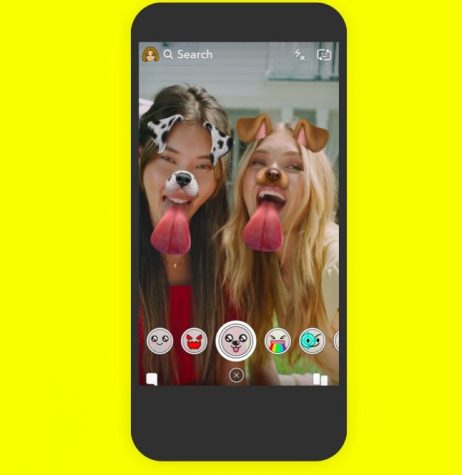The Truth About Snapchat

January 24, 2020
You may think you know everything about Snapchat, but there is more to it than the questionable usernames, funny filters, and endless stories. Snapchat was launched in July of 2011 as a way to exchange pictures and videos that would be deleted after they are viewed. It was started by Evan Spiegel, Bobby Murphy, and Reggie Brown under the original name, Picaboo. Today, there are over 210 million daily active users. In 2019, Snapchat was used by 90 percent of all 13-24 year-olds and 75 percent of all 13-34-year-olds in the United States alone.

All forms of social media have rules and tactics to gain and control their users. Snapchat is no exception.
Like all social media, there is a psychology-based system behind Snapchat. As of every social media app, Snapchat has rules. For example, when using Tinder, you must swipe right to like and left to pass, or when using Twitter, your tweet has a maximum of 140 characters. For Snapchat, the videos and photos sent are deleted after viewing, and if they are saved, the sender will be notified. Teenagers, the majority of Snapchat’s target audience, are known for being insecure about the opinions of their peers. When they know that the media they send to their peers will disappear, they will no longer worry as much about what they send. This can be a good thing, as young people can feel confident with themselves, but teenager’s brains are not fully developed, resulting in a greater tendency of irrational decisions. Often, teens will send photos and videos they would not otherwise send through text or other social media. With a quick screenshot or screen recording, these forms of media can be posted and reposted countless times. This can be detrimental to both a person’s overall health and future career.
Another way Snapchat can psychologically impact users differently from other social media apps is the design and accessibility of specific elements. One important part of Snapchat is that the camera screen is the first page people see when opening Snapchat, directly implying the purpose of the app. This is different from other photo-sharing apps, such as Instagram or Facebook, which show the feed as the default screen. When there is easy access to the camera, it saves steps that make the app easier and more efficient to use, just like how you can swipe through different filters. These elements give people fewer decisions to make, which keeps the audience happy, since making more decisions can make users feel more easily tired.

With the amount of customization that Snapchat provides, users are able to get creative and draw, add text, pictures, GIFs, and even make their own filters for their photos. You can play games with your Bitmoji, watch TV shows, message, video call, and so much more besides the original concept. With all of these different opportunities, it can allow users to feel more productive by using only one app.
Lastly, the messaging aspect of Snapchat impacts users psychologically because socially, we feel as if we have to respond to others to show that we care about them. Often, leaving someone on “Read” or taking a lengthy amount of time to respond is seen as rude. As nirandfar.com says, “Following this rule, when a user gets a snap, they are somewhat obligated to send something back.” Also, since the message, photo or video disappears, people who use Snapchat feel that they need to respond as soon as possible so that they do not forget what they were sent earlier. Snapchat emphasizes this by putting “Double-tap to reply!” or “Tap to chat/view!” in bold, bright letters. This kind of motivation, whether you see it as positive or negative, can cause Snapchat to become a part of your daily routine.

All social media uses psychology and impulses to gain and maintain their users. Snapchat is no exception to this and it has resulted in a highly successful platform with millions of users. In the end, the true impact of social media depends on how you use it, and what you use it for. As the CEO of Snapchat, Evan Spiegel, once said, “I’d like to create a space for people who have a lot of talent but not a lot of reach.”
